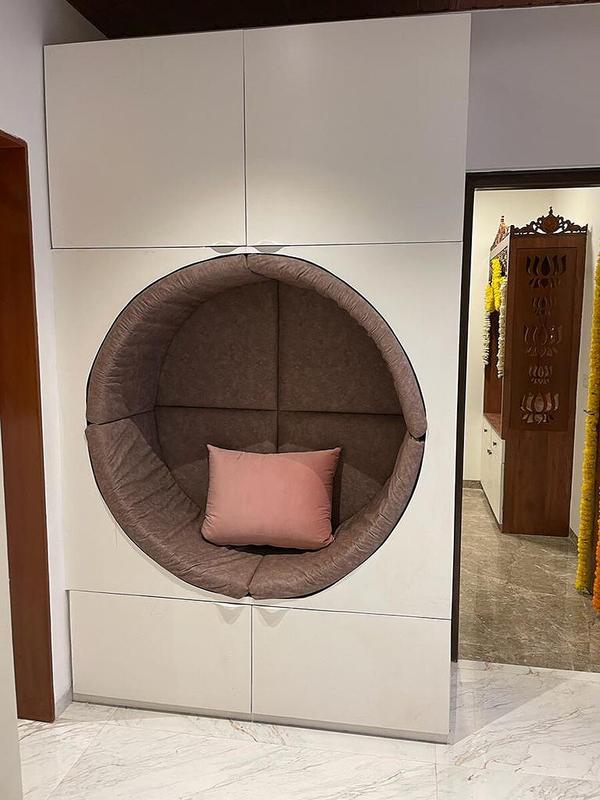Designing a children's bedroom requires careful consideration of both functional and aesthetic aspects to create a safe, comfortable, and inspiring space. Here are some tips for designing a children's bedroom: 1. Safety First: Prioritize safety by securing furniture to prevent tipping, using childproof locks on drawers and cabinets, and ensuring that electrical outlets are covered. Avoid small parts and choking hazards in decor and accessories. 2. Age-Appropriate Design: Design the room to be age-appropriate, considering the child's current age and interests. This allows for flexibility as the child grows. Use adaptable furniture and decor that can be easily updated. 3. Color Scheme: Choose a color scheme that reflects the child's personality and preferences. Bright, vibrant colors can stimulate creativity and energy, while softer tones can promote relaxation. Consider using a neutral base color for walls and larger furniture pieces, with pops of color in decor elements. 4. Functional Furniture: Invest in functional furniture like bunk beds, loft beds with storage underneath, or trundle beds to maximize space. Include a desk for schoolwork or creative activities, and ensure there is ample storage for toys, books, and clothing. 5. Personalization: Allow your child to personalize their space with artwork, posters, and decor that reflect their interests and hobbies. Consider using chalkboard or whiteboard paint for creative expression on the walls. 6. Comfortable Bedding: Choose comfortable and age-appropriate bedding that complements the room's color scheme and theme. Ensure the mattress and pillows are of good quality to support restful sleep. 7. Creative Storage Solutions: Use storage solutions that are easy for children to access, such as low shelves, labeled bins, and open cubbies. Consider modular storage units that can be rearranged as needed. 8. Play Area: Create a designated play area with a rug and storage for toys. This area can evolve as the child's interests change. Include a reading nook with a comfortable chair or bean bags. 9. Safety Measures: Install window coverings with cordless mechanisms to prevent accidents. Ensure that furniture and decor items are made from non-toxic materials. 10. Lighting: - Provide adequate lighting for different activities, including overhead lighting, task lighting for homework, and nightlights for safety. - Consider fun and whimsical lighting fixtures that complement the room's theme. 11. Accessibility: - Ensure that items like clothes and toys are within the child's reach to encourage independence and organization. 12. Flexibility: - Design the room in a way that allows for easy updates as the child's interests and needs change. - Consider furniture that can be repurposed for different stages of childhood. 13. Organization and Decluttering: - Regularly declutter and organize the room to maintain a clean and functional space. - Involve your child in the process to teach them organization skills. 14. Theme or Style: - Incorporate a theme or style that appeals to your child, whether it's based on their favorite characters, hobbies, or interests. 15. Growth Chart: - Install a growth chart on one of the walls to track your child's height over the years. Remember to involve your child in the design process to ensure that their preferences and needs are considered. A well-designed children's bedroom can foster creativity, independence, and a sense of ownership over their space.
Send Message
